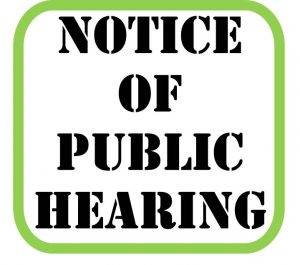Dallas City Council Committee Sets August 27th Hearing on Joining New Regional Air Quality Monitoring Network
WE NEED YOU
TO SPEAK OUT….
FOR CLEAN AIR!….
FOR PUBLIC HEALTH!….
FOR ENVIRONMENTAL JUSTICE!…..
FOR SCIENCE!
MONDAY, AUGUST 27th
9 AM
ROOM 6 ES
DALLAS CITY HALL
1500 MARILLA
DALLAS CITY COUNCIL
QUALITY OF LIFE COMMITTEE
PUBLIC HEARING:
Should Dallas join Dallas County and Plano in establishing a new regional air quality monitoring network
Share the FaceBook Event Page 
Dallas residents’ Right-to-Know what’s in the air they’re breathing could take a big step on Monday, August 27th.
That’s when the Dallas City Council’s Quality of Life Committee will hold a public hearing to decide if the City should join a new regional air quality monitoring network. It’s the most important decision concerning Dallas city-wide air quality in years.
Why? Because information is power.
Despite the fact you breath lots more air than you eat food or drink water, product labeling allows you to know more about what you’re putting in your stomach than what you’re putting in your lungs. A 21st-Century air monitoring network would begin to correct that imbalance.
Unlike the current handful of monitors operated by the Texas Commission on Environmental Quality (TCEQ) and EPA, this new local network would have hundreds of small high-tech, low-cost sensors and they’d be reporting their information in real time on a phone-accessible app.
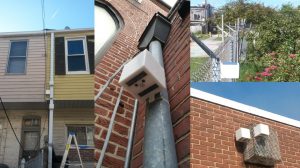 Despite being the home to 2.5 million people, and covering an area slightly smaller than the state of Rhode Island, Dallas County has only a single official monitor for deadly Particulate Matter pollution you can access online. Unless you live within close proximity of that one monitor you don’t have much idea of what kind of crap you’re inhaling.
Despite being the home to 2.5 million people, and covering an area slightly smaller than the state of Rhode Island, Dallas County has only a single official monitor for deadly Particulate Matter pollution you can access online. Unless you live within close proximity of that one monitor you don’t have much idea of what kind of crap you’re inhaling.
Being able to access real time air quality information no matter where you in DFW are has the potential to transform personal habits and public policy.
Residents with asthma or other breathing problems will have a much better picture of the air they’re actually being exposed to, down to the specific neighborhood or even street block. They can pro-actively plot a path to avoid polluted parts of town, or wait to take that walk or run.
Hotspots of pollution will be more readily identified by the people most affected by them. And, if we organize, that means they’ll get more notice from policymakers too.
Public health officials will be able to track school absentee rates with “bad air days.” City traffic engineers can time stoplights to reduce vehicle pollution. We’ll know which neighborhoods already experience a lot of air pollution and shouldn’t be candidates for siting new industrial facilities.
This is why the Dallas City Hall IT staff not only included high tech air quality monitoring in the category of “Public Health and Safety” but also “Equity and Empowerment.” This network and the information it provides can be a powerful tool for citizens.
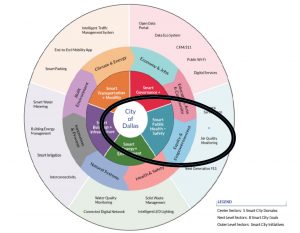
There are many ramifications to having this information available – some obvious, some we can’t imagine yet. High-tech air quality monitoring is one of the most useful applications of emerging “smart cities” technology.
Chicago is installing a grid of over 500 air quality sensors. Baltimore is doing the same. LA is committed to at least 100. Even Chattanooga, Tennessee has its own network. Now DFW, home to some of the worst air in the country for decades, has a chance to do the same.
Dallas’ Quality of Life Committee is Chaired by three-term council veteran Sandy Greyson, and includes rumored Mayoral candidate Scott Griggs, Mark Clayton, Omar Narvaez, Jennifer Staubach-Gates, Adam McGough, and Ricky Callahan.
If the Committee votes to join the Network, it’s recommendations would then be forwarded to the the entire 15-member City Council for formal approval.
As proposed, The North Texas Clean Air Network would be administered by a board that includes public health experts from Parkland and the Dallas County Medical Society, officials from every city, county, hospital or school district that become members and public interest advocates. This board would decide where to put new monitors, insure their technical proficiency, and help educate the public about the network.
Officially, it’s chartered goals are to
1. Provide the best, most up-to-date factual information about local air quality by supervising the implementation and maintenance of a publicly accessible, secure, and scientifically credible regional air sensor network providing simultaneous real time air quality information from multiple locations within member or contracted jurisdictions via the World Wide Web.
2. Provide fact-based public education resources on local air quality.
3. Support scientific research on local air quality by local colleges, universities, hospitals and schools.
4. Work with regulatory agencies and entities to further local clean air goals.
The Network began as a National Science Foundation grant proposal led by Dr. David Lary of UTD. It requested funding for dense concentrations of monitors in Plano and Southeast Fort Worth. It got a rare call back by the NSF, but no money.
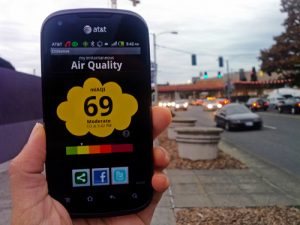 Still committed to the idea, the NSF grant partners then began building the same kind of monitor network across DFW using donations of resources and labor.
Still committed to the idea, the NSF grant partners then began building the same kind of monitor network across DFW using donations of resources and labor.
Over the past year, 30 Particulate Matter monitors have been bought or donated for this purpose. They’re being installed at community colleges, public schools, and one is being located in the Joppa neighborhood of Dallas. Consortium members now want to turn these monitors over to the proposed Network board so the system can be operated in the public interest as a kind of public utility.
There are no additional costs for the first wave of 30 monitors other than internet connectivity and minimal maintenance. More monitors can be added to the network by collecting fees for installation and using a portion for maintenance.
But as of last month, there’s an exciting new source of funding for the Network – an untapped regional clean air fund that over a dozen North Texas cities contributed to a decade ago and has sat unused ever since. Over $500,000 in local money has already been raised and budgeted to “protect Texas air.”
UTD’s Dr. Lary has proposed using slightly more than half of that collected money to build a sophisticated 200-sensor air quality network spanning across DFW measuring Particulate Matter pollution, temperature, pressure and humidity with an additional 20 primary monitors measuring the Particulate Size Distributions and Criterion Pollutant Gases (including O3, NO, NO2, CO, SO2,H2S, VOC), Temperature, Pressure and Humidity. The smaller 200 monitors are all solar-powered and use wifi.
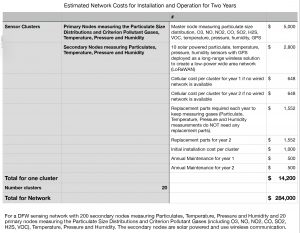
Dallas has a reputation for desperately wanting to be known as “world-class” and a recent Morning News article noted how Dallas had a “high-tech image problem” among innovators. A 200-monitor high-tech air quality network would instantly propel the city into the ranks of the “smartest” wired metro areas in the US, not to mention advance the cause of local public health. Dallas could be ahead of the curve instead of behind it.
2018 is the 27th straight year Dallas and all of DFW will be in violation of the Clean Air Act. The State of Texas and the EPA have shown themselves to be unwilling to take the problem of dirty air seriously. Now its local government’s turn.
SHOW-UP ON MONDAY AUGUST 27th AT DALLAS CITY HALL AND SPEAK OUT FOR A PRO-ACTIVE RESPONSE TO DFW AIR POLLUTION PROBLEMS.

